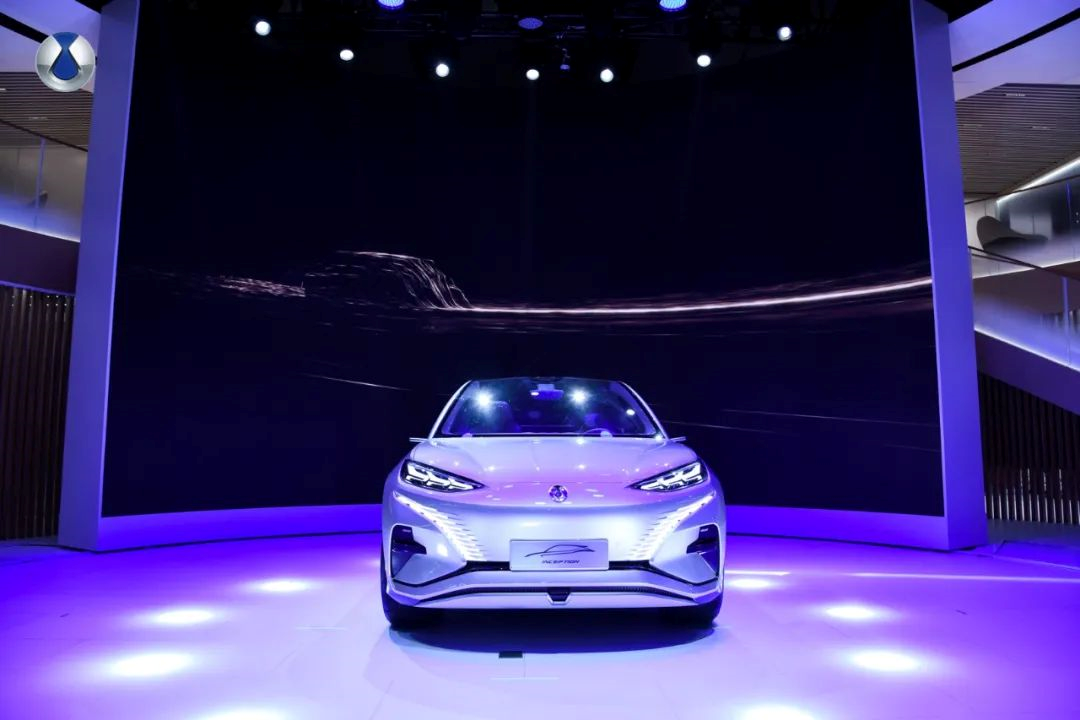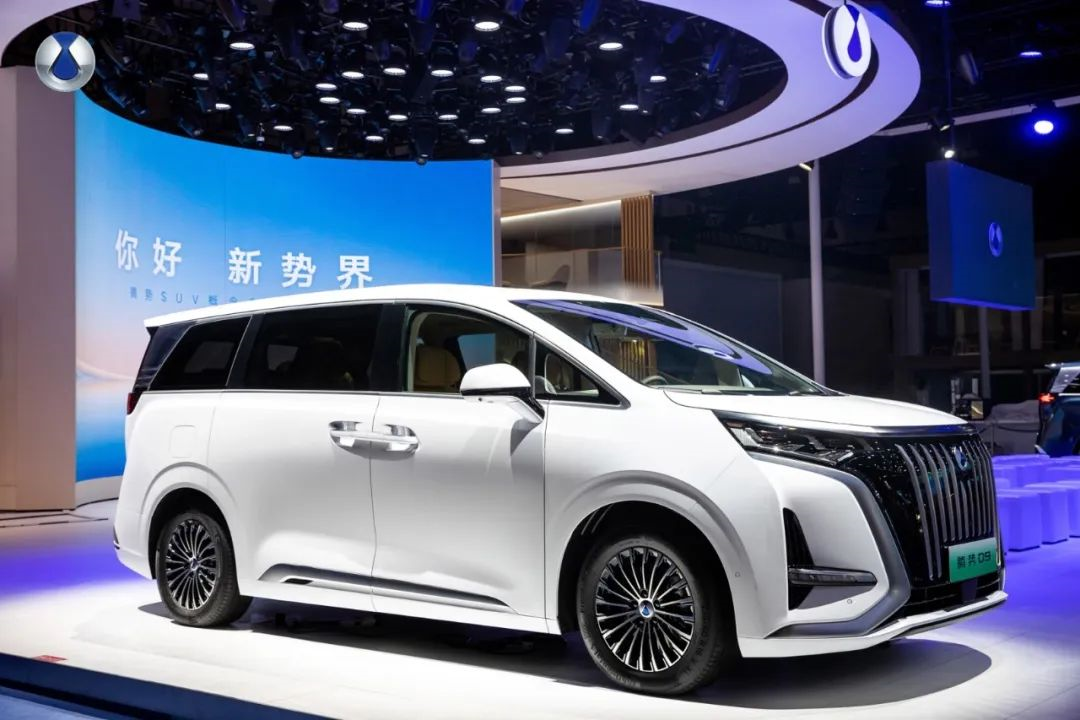Author | Qiu Kaijun
The recently concluded Chengdu Auto Show had very few newly launched cars. One of them was the DENZA concept car INCEPTION, along with the popular model D9, which attracted a lot of attention to the DENZA booth.
DENZA has never been in the spotlight like this before. Established in 2010 as a joint venture between Mercedes-Benz and BYD, DENZA should have had a strong start. However, since the launch of its first car in 2014, sales have been poor.
On May 16, 2022, DENZA entered a new era. That day, DENZA held a press conference, announcing three things: equity adjustment, with BYD becoming the absolute majority shareholder with a 90% stake; brand independence; and the pre-sale of the new D9 after its makeover.
“At the Chengdu Auto Show, the DENZA D9 has already accumulated 40,000 orders, with almost 15,000 of them having been converted to firm orders. The DENZA team is even more confident,” said Zhao Changjiang, General Manager of the DENZA Sales Division, at a dedicated communication conference with the Hard-core Auto Research Institute on August 26.
“By 2023, DENZA aims to sell 200,000 cars, and reach sales of 500,000 cars by 2025,” Zhao added.
“This is a time of great dividends, but also a time of fast running,” Zhao said.
How to quickly sprint on the road to build a new luxury brand? DENZA’s approach is to use hard-core strength to open the way, rather than throwing money to improve the brand.
“Doing those vague things” is not BYD’s culture, “and the company won’t approve my expense,” Zhao said.
Why can DENZA make luxury cars?
Although DENZA was founded by a partnership between Mercedes-Benz and BYD, after Mercedes-Benz reduced its stake to 10%, BYD took over the management of the brand, raising concerns about its ability to make luxury cars.
However, Zhao believes that DENZA can take advantage of the trend. “Chinese brands will also replace traditional luxury brands in the high-end field, and this trend has already begun,” he said.
Indeed, this trend has emerged. New car makers, such as NIO and Li Xiang, have already established themselves in their respective price segments, and have even surpassed their BBA competitors.
Even BYD’s flagship vehicles in the Wangchao series, the Tang and Han, have won many additional purchases from BBA’s customers.
Can DENZA do it?
At the Chengdu Auto Show press conference, Zhao shared the distribution of DENZA D9 order customers, of which 50% came from BBA.
Zhao Changjiang said, “In the 400,000 yuan level, it’s basically BBA. Audi’s average price is 320,000 yuan, BMW is 390,000 yuan, Mercedes-Benz is 410,000 yuan, and we positioned the DENZA brand in this range.”
The DENZA D9 is priced from 329,800 yuan to 4.598 million yuan, directly targeting BBA.
Behind this trend, Zhao Changjiang believes that “on the one hand, with the era of intelligent electric vehicles, Chinese brand products have the ability to replace traditional luxury brands; on the other hand, Chinese consumers have high recognition of Chinese brands. ‘There has also been a significant improvement in the operational capabilities of Chinese brands.'”
Regarding DENZA itself, Zhao Changjiang believes that Mercedes-Benz and BYD’s joint venture laid a good foundation for DENZA. After BYD took the lead in DENZA, it also improved the efficiency of brand decision-making and operations. Combined with BYD’s leading intelligent electric platform and the ecosystem that is being built, DENZA can become a leader in terms of product strength.
In terms of building a luxury brand, Zhao Changjiang believes that DENZA has an advantage compared to other new forces.
Because in the second stage of electric vehicles, namely the intelligent stage, there cannot be any shortcomings in product competition, and the strengths need to be very prominent. “New forces have many shortcomings. I think they are like a student who is not an all-around student but rather one who is specialized. DENZA, on the other hand, research and development, supply, and production are originally strengths. By supplementing user services, user operations, and brand shaping, it can have the strength of an ‘all-around student.'”
Focus on Products First, then Build the Brand
How should newly founded, luxury-positioned brands be built?
Leading brands NIO and Li Xiang have given completely different answers.
NIO initially spent heavily on building brand image, including launching the high-end sports car EP9, participating in the Formula E electric car race, and constructing large-scale image stores in prime locations.
Li Xiang, on the other hand, basically invested most of the funding into research and development, production, and channels, with a reputation for being “frugal with factory building,” initially putting brand building aside and focusing on pursuing the ultimate competitiveness of products and user word of mouth, before then building the brand.
DENZA’s approach is closer to Li Xiang’s.
“We hope to use hardcore technology plus user co-creation to jointly build a high-end luxury brand,” Zhao Changjiang said, “Some brands have started using the tactics of luxury goods, even inviting luxury goods teams to join. We don’t want to do that.”
DENZA’s first move is to create a “value ratio” compared to other luxury brands with hardcore technology.
Zhao Changjiang said that DENZA would not create products with a high premium, but instead would create products with a small premium. “My product strength is strong enough, and I’m targeting all million-dollar products. The D9 is aimed at Alfa Romeo and other million-yuan SUVs.”
“He said that the second car, the INCEPTION concept car unveiled at the Chengdu Auto Show, is a mid-size SUV, targeting Porsche Cayenne, BMW X6, and Lamborghini Urus. “I’m targeting these cars, and I’m only selling for a little over 400,000 yuan.””
Zhao Changjiang said that this approach of using hard-core technology to create “value-for-money” has also been done by Huawei. “When Huawei was developing the MATE and P series, they were also playing the game of benchmarking and dimensionality reduction…only after the release of certain black technologies did they surpass many brands.”
Tesla’s second move is user operations.
Since becoming the general manager of Tesla’s sales department, Zhao Changjiang has frequently interacted with potential users on Weibo. He believes that brand operations have shifted from one-way output by car companies to interactive operation, with user perception determining it.
He introduced that “the Tesla D9 has more than 20 features, which were added or adjusted based on user feedback after the pre-sale launch.” “40,000 pre-orders, 15,000 converted orders. About 90% of these people haven’t seen the car, but they converted to an order. This is the effect of co-creation and sharing.”
Tesla’s third move is user service.
He emphasized that Tesla “rejects outsourcing of services” and instead “uses a fully direct-operated model.”
“We really hope to provide customers with good service, a closer experience, and broader service coverage.”
Zhao Changjiang introduced that Tesla planned to establish a sales network in 68 cities with 200 stores this year, but more than 100 cities have already had users place orders, so it increased to 117 cities and 267 stores.
Zhao Changjiang said that Tesla has spent 500 million yuan in marketing channels this year, but has not invested a penny in ads. “I first put the product out there and let others feel that I am strong, rather than raising the tone first and making others think you have a good taste…this is not BYD’s culture, and if you want to do those virtual things, the company will not approve my expenses.”
“I really won’t get approval,” he repeated.
“In 2022 and 2023, I still focus on the product. I will enter the market first and let users have an excellent experience. Then, gradually establish the brand feeling in 2024 and 2025.”
Zhao Changjiang is not worried that customers will not choose Tesla if it doesn’t have a certain tone, isn’t fashionable or cool enough. “I believe that Chinese customers are not just one type, but only pursuing that kind of tone. I am pursuing this part of the users… occupying 20% of the luxury car market is enough.”
Grand Goals
Despite abandoning a portion of luxury-seeking customers, Tesla’s goals remain significant.
Zhao Changjiang analyzed that the 300,000 to 600,000 yuan car market sold 2.96 million cars last year, and is expected to grow by 30% this year. Among them, foreign brands outside of the first-tier cities have been squeezed to the edge, and Chinese brands will gradually occupy 50% of the market.“This is an era of huge dividends, but also a time to run quickly”, said Zhao Changjiang. By 2023, DENZA aims to achieve a sales volume of 200,000 vehicles; by 2025, they aim to achieve a sales volume of 500,000 vehicles and rank in the top two for new energy luxury cars and top three for luxury cars overall.
By 2025, according to Zhao Changjiang, there will be a watershed for mid-to-high-end brands. Currently, many of the new power brands and other brands are estimated to be eliminated by more than half.
2025 is still far away, but DENZA must make a good start this year.
Zhao Changjiang revealed that DENZA plans to increase its production capacity to 1,000 vehicles in September, 3,000 to 5,000 vehicles in October, 5,000 to 8,000 vehicles in November, and more than 10,000 vehicles in December.
Based on this calculation, DENZA is expected to deliver more than 30,000 vehicles this year.
DENZA is rising again, and its momentum is not small.
This article is a translation by ChatGPT of a Chinese report from 42HOW. If you have any questions about it, please email bd@42how.com.
